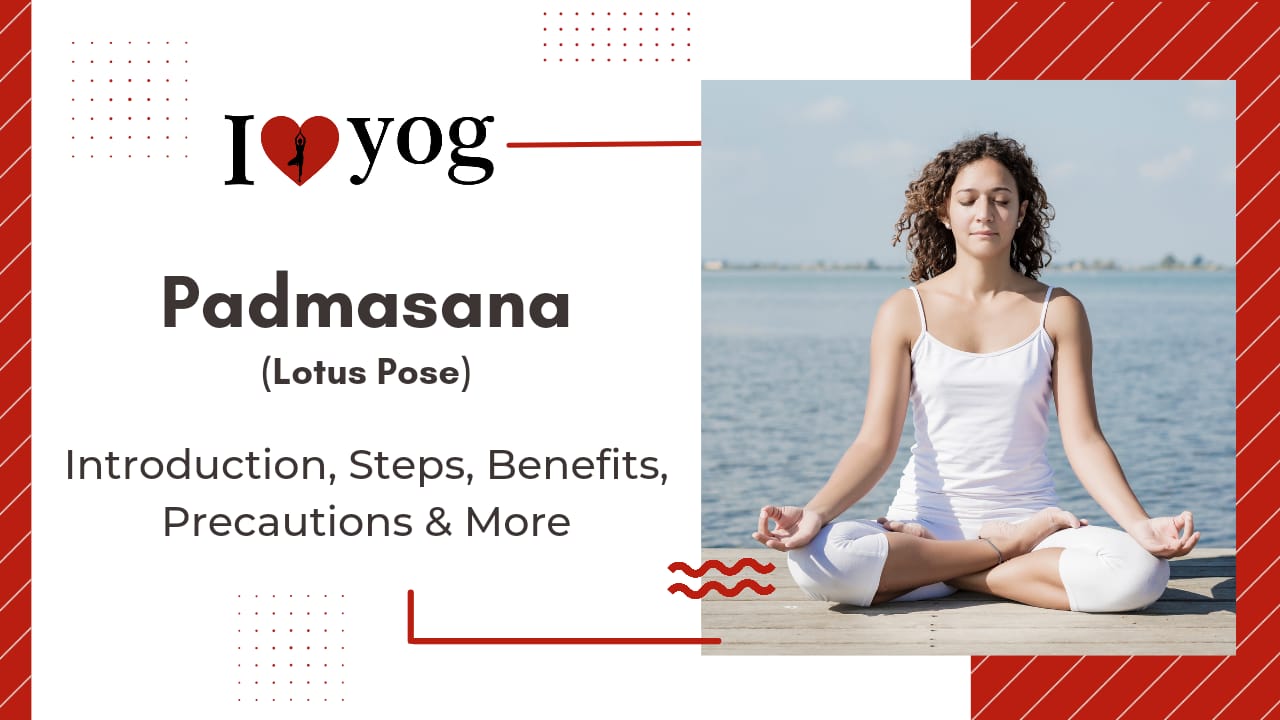What You Need to Know Before Performing Padmasana?
Purva Asanas (Preparatory Asanas)
Before Padmasana, you can perform one or more of the following poses:
- Ardha Matsyendrasana
- Baddha Konasana
- Virasana
- Janu Sirasana
- Yogasana Level – Beginners
- Yogasana Style – Setting
- Yogasana Repetitions – Repeat with both legs stacked atop one another.
- Yogasana Strengthens – legs, thighs, and spine.
- Yogasana Stretches – Knee, Ankle
Padmasana’s effect on tri dosha
Dhanurasana has a predominantly soothing effect on Vata. It brings Vata and its subtypes into equilibrium.
It is extraordinarily effective at balancing Apana Vayu. In doing so, it treats menstrual irregularities, urinary bladder issues, sciatica, promotes low back and hip movement, reduces stress in the hip region, and facilitates birthing. This is further aided by the balancing of the Muladhara Chakra, which Padmasana does. Additionally, one feels grounded and comfortable. Constipation, sadness, and weariness go.
Padmasana balances the Prana-Apana axis. During Padmasana, one is instructed to pull the lower Vayu, i.e. Apana Vayu, upwards and push the upper Vayu, i.e. Prana Vayu, downwards. These two Vayus intersect at the navel. When this occurs, theVayu moves upwards and pushes the upper Vayu, i.e. Prana Vayu, downwards. These two Vayus intersect at the navel. When this occurs, the body’s processes are in harmony and it is energised. This asana controls and stimulates the mind.
Padmasana balances udana vayu and energises the entire body; it also soothes the mind, improves circulation, and fortifies the heart.
How To Perform Lotus Yoga Asana
- Extend your legs in Dandasana as you sit on the floor. Your right knee should be bent to the side, and your right foot and knee should be held in your hands.
- Rotate your leg from the hip (not the knee) and position your foot in the crease of your left hip.
- Bend your left knee and rotate the thigh outward from the hip, just like you did with your right knee.
- Raise your shin slightly, cross your left foot over your right foot, and tuck it into the right hip crease.
- Place the tops of your feet on your upper thighs and bend your knees toward the ground. Try not to allow your ankles to swell.
- Sit tall, with your sternum lifted and your spine lengthened.
- A folded blanket may prevent the spine from rounding when sitting.
- Take calm, deep breaths and hold the stance for as long as you feel comfortable.
Benefits Of Lotus Yoga Posture/Asana?
- Eases childbirth
- Reduces menstrual cramps
- Revitalizes your consciousness
- Simple approach to combat your fear and anxiety
- Combats insomnia
- Reduces muscular tension
- Enhances circulation and breathing
- Restores energy level
- The Lotus Pose provides a stable base for meditation techniques.
- As you settle into the position, the relaxation response (parasympathetic nervous system) is activated and the stress reaction is deactivated (sympathetic nervous system).
- Lotus Pose may assist in reducing or regulating blood pressure.
- Physically, it may be relied upon to open the hip joints and stretch the quadriceps, groyne, and ankles.
Contraindications And Warnings Regarding Lotus Pose/Asana?
- Before performing Padmasana, it is essential to consider the following factors:
- Padmasana is a meditation pose that should preferably be practiced in the morning because it helps to revitalize the mind and body. However, it can also be performed in the evening.
- Padmasana is best performed on an empty stomach. However, if you intend to conduct it as part of a series of exercises, it is recommended to perform it four to five hours after eating.
- Due to the fact that Padmasana is a meditation pose, it should preferably be performed in a tranquil and peaceful environment with minimal noise and disturbance.
- Do not execute Padmasana if you have an injury to your knee, ankle, calf, or spine.
- Always practice a few stretches for your legs and spine prior to Padmasana.
What Is the Science Behind Lotus Pose?
This seated position has numerous physical and energizing benefits: it can promote lumbar spine circulation, stretch the ankles and legs, and increase hip flexibility.
Tips For Beginners on Lotus Pose/Asana?
- To prevent overstretching the ankles when performing the cradle position, press the inner side of your foot against the top portion of your arm. This is an advice for pregnant ladies as well as beginners so that their ankles are balanced and not overly stressed.
- Ensure that the inner and outer ankles are stretched equally. To accomplish this, you must bring your foot close to the opposite groyne. In this manner, it may be simple for novices to maintain equal and perfect balance.
- Take deep breaths in and out and observe your breathing patterns. This is essential for the development of meditation and concentration as a novice.
- Allow your yoga instructor to have your back in the beginning stages of your practise to ensure your safety and wellness.
Advanced Changes in Pose
- Baddha Padmasana- Locked Lotus Pose
- Ardha Padmasana- Half Lotus position
- Utthita Padmasana- Raised Lotus Pose
- Urdhva Padmasana- Upward Lotus Pose
- Gupta Padmasana- Hidden Lotus Pose
Related Yoga Poses/Asanas –
After executing Padmasana, one may execute –
- Adho Mukha Svanasana
- Supta Padangusthasana
Reference:-
https://www.easyayurveda.com/2018/01/24/padmasana-lotus-pose/amp/


